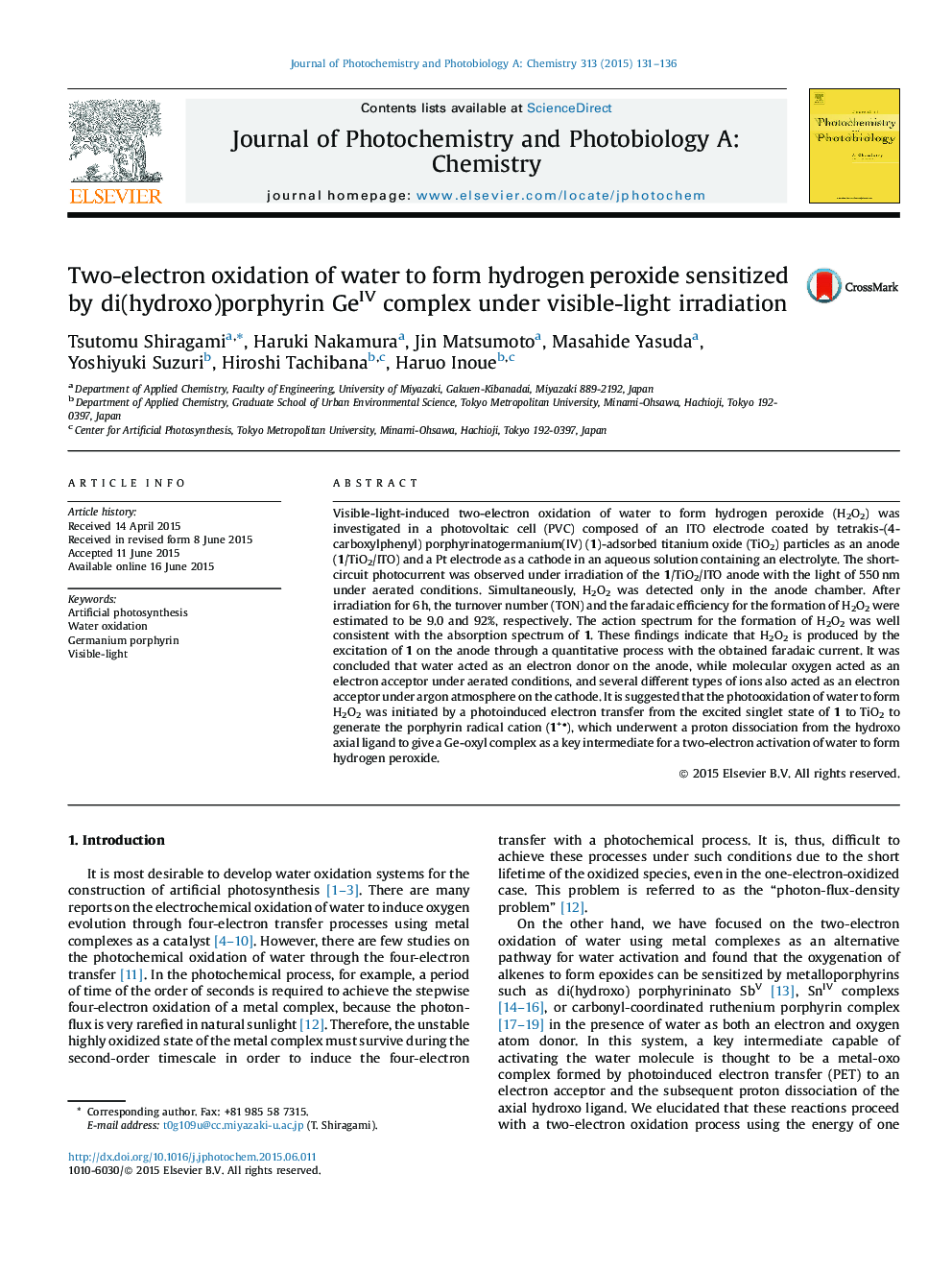| کد مقاله | کد نشریه | سال انتشار | مقاله انگلیسی | نسخه تمام متن |
|---|---|---|---|---|
| 26474 | 43954 | 2015 | 6 صفحه PDF | دانلود رایگان |

• We prepared an ITO electrode coated by tetrakis-(4-carboxylphenyl) porphyrinato germanium(IV) (1)-adsorbed titanium oxide (TiO2) particles (1/TiO2/ITO).
• We prepared a photovoltaic cell (PVC) composed of 1/TiO2/ITO as an anode and a Pt electrode as a cathode in an aqueous solution containing Et4N+BF4− as an electrolyte.
• Hydrogen peroxide (H2O2) from water was observed under irradiation of the 1/TiO2/ITO anode with monochromatic light (550 nm) under aerated conditions in the PVC system.
• The turnover number (TON) and the faradaic efficiency for the formation of H2O2 were estimated to be 9.0 and 92%, respectively.
Visible-light-induced two-electron oxidation of water to form hydrogen peroxide (H2O2) was investigated in a photovoltaic cell (PVC) composed of an ITO electrode coated by tetrakis-(4-carboxylphenyl) porphyrinatogermanium(IV) (1)-adsorbed titanium oxide (TiO2) particles as an anode (1/TiO2/ITO) and a Pt electrode as a cathode in an aqueous solution containing an electrolyte. The short-circuit photocurrent was observed under irradiation of the 1/TiO2/ITO anode with the light of 550 nm under aerated conditions. Simultaneously, H2O2 was detected only in the anode chamber. After irradiation for 6 h, the turnover number (TON) and the faradaic efficiency for the formation of H2O2 were estimated to be 9.0 and 92%, respectively. The action spectrum for the formation of H2O2 was well consistent with the absorption spectrum of 1. These findings indicate that H2O2 is produced by the excitation of 1 on the anode through a quantitative process with the obtained faradaic current. It was concluded that water acted as an electron donor on the anode, while molecular oxygen acted as an electron acceptor under aerated conditions, and several different types of ions also acted as an electron acceptor under argon atmosphere on the cathode. It is suggested that the photooxidation of water to form H2O2 was initiated by a photoinduced electron transfer from the excited singlet state of 1 to TiO2 to generate the porphyrin radical cation (1+), which underwent a proton dissociation from the hydroxo axial ligand to give a Ge-oxyl complex as a key intermediate for a two-electron activation of water to form hydrogen peroxide.
Figure optionsDownload as PowerPoint slide
Journal: Journal of Photochemistry and Photobiology A: Chemistry - Volume 313, 1 December 2015, Pages 131–136